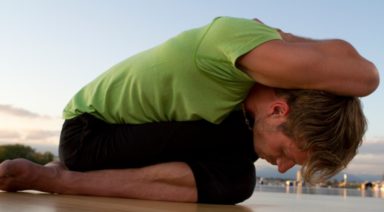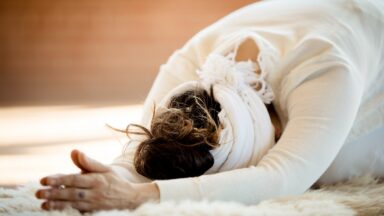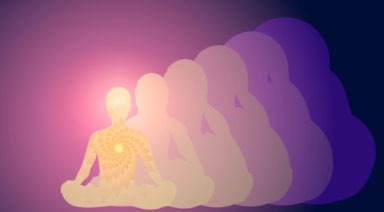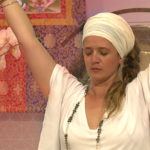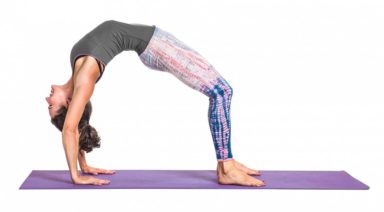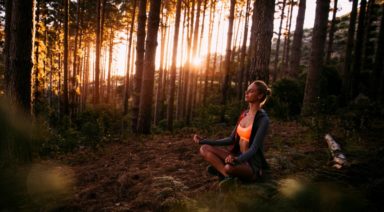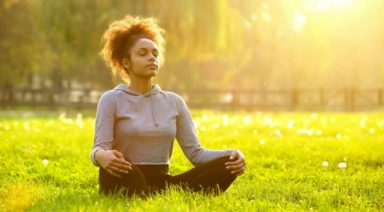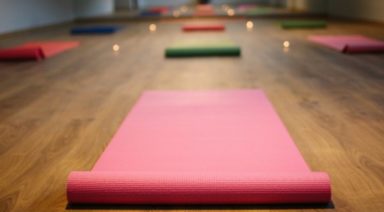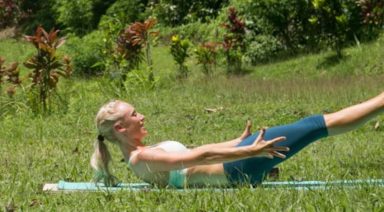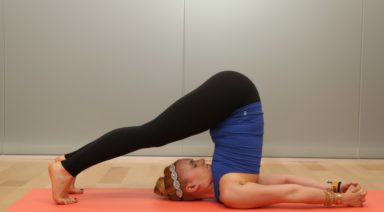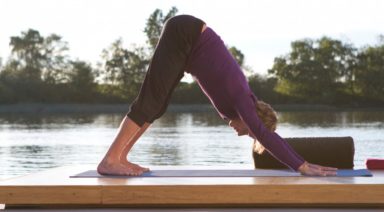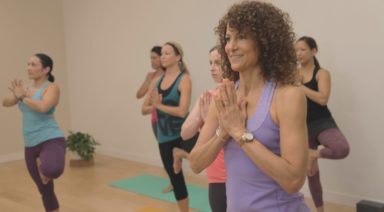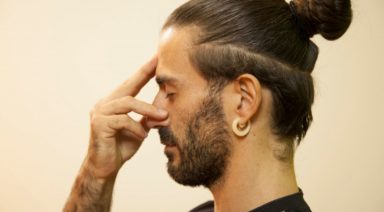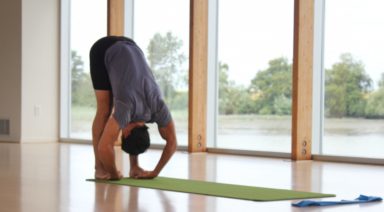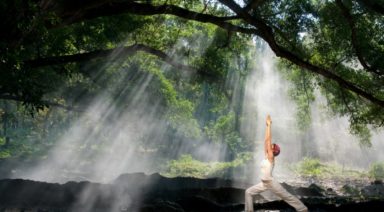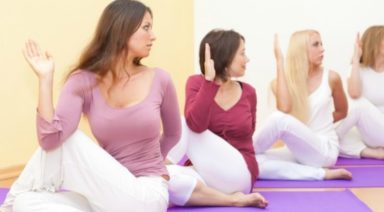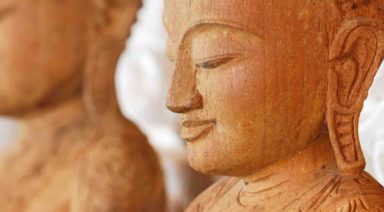3 Benefits of a Warm-up in Yoga
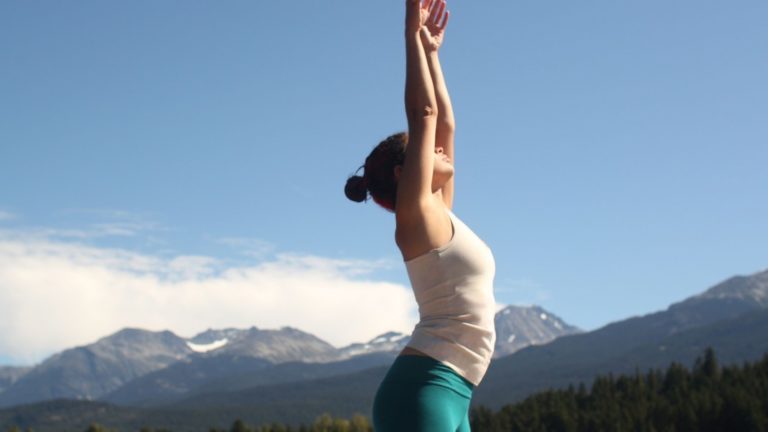
“If you spend too much time warming up, you’ll miss the race. If you don’t warm up at all, you may not finish the race.” – Grand Heidrich
Balance is the key. For a long time I did yoga first thing in the morning. It was my morning ritual, my ‘wake up tool’; the incentive I needed to get out of bed and face the bleak London morning. I would literally roll out of bed, spread my yoga mat, and start my routine. Now though, this has all changed.
The influence and place of yoga in my life has shifted. I have stopped using yoga as a ‘wake up tool’ and started using it as a time to reconnect with my centre, to breathe deeply, and to enjoy the connection between my heart, mind, and body. As my yoga practice has developed and deepened, I have started to look at the other components that come under the umbrella of yoga, for example, pranayama, meditation, and a warm-up routine. All these components have had a positive influence on my life. It is the warm-up however, that I have had the most fun learning about.
We mostly associate a warm-up with strenuous exercise, such as running or weight lifting. A warm-up is necessary to limber up the body to avoid injury. The impact of exercise on the body’s joints and muscles is significant, and if you don’t ease yourself into physical activity you can seriously injure yourself and hinder any progress that you may have made. Although not as strenuous as running or weight lifting, yoga still is a physical activity, an exercise which uses a wide range of joints and muscles; a warm-up before any exercise, no matter how strenuous, is beneficial. So why do so many of us not warm-up before a yoga practice?
When you warm-up, you safely ease yourself, both physically and mentally, into the exercise. Warm-up postures, such as light twisting and bending, shoulder rotations and spinal rocking, help you prepare for the activity ahead. You are improving your muscle flexibility, loosening areas of your body, increasing blood flow to your extremities, and focusing your mind on the task ahead. A warm-up routine is just as important as the yoga practice itself. I have seen numerous benefits since incorporating a warm-up routine into my yoga practice. The mental and physical benefits of a warm-up are numerous. Here are my top three:
- Intention: I take the time during a warm-up to focus on my intention. Most days my intention includes the same principles: happiness, patience, and perseverance. Repeating my daily purpose of seeking happiness, of approaching all things with an open and patient heart, and persevering in whatever activity I will be engaging in, helps me reground myself. It helps me focus. I stand tall and strong in samasthiti (Standing Upright Posture) and centre myself in my intention. It always makes me smile. How can you think of happiness without smiling? How can you imagine achieving your goals through perseverance without being filled with joy?
- Breath: As soon as I step onto my mat I become conscious of my breath. I stand tall, slow down, and pay attention to my breathing. I focus on the rise and fall of my chest and the quality of breath that I take in. This exercise calms my mind and prepares me for the practice which will follow. It also helps me concentrate on being present. I focus on the now and let everything else fall away.
- Strength: I love the feeling of strength following my yoga warm-up. To ground myself on my mat and to take some time out for me, leaves me with a great sense of accomplishment, and this is before I’ve even started my yoga routine. I stand tall and do the palmyrasana series (Palm Tree Postures). I am fully aware of each movement; of how each movement affects a different part of my body. How many of us travel through our day not fully paying attention to the way that our bodies move? I spread my arms and gather strength, becoming more grateful for my body’s movements and gaining an increasing appreciation for my health. It is true that most of us only appreciate our health when it is failing. Why wait until then? Use your yoga practice to focus on your health and strength.
These three areas have improved my yoga practice. They’ve also improved my overall outlook on life and my attitude to the day ahead. The postures that I use to warm-up mostly stay the same. These three groups of postures focus on an immense area of the body. I feel like my trunk and limbs really are warmed up before my practice. Why not have a look and see if you can do these postures as a warm-up routine?
Palmyrasana series (Palm Tree Postures)
There are six poses in this series. Collectively they tone the waistline, arms, shoulders, back, and thorax and release muscular tension in these areas. They also exercise the lungs and improve your posture. I personally do each pose three or four times.
Pose 1: Stand upright in mountain pose with your arms extended up next to your ears and the backs of your hands facing each other. As you inhale, raise yourself onto your tiptoes as high as you can and pause for about five seconds. Exhale as you come down.
Pose 2: Stand as in pose one. Lower your arms to your sides, keeping your arms straight, as you exhale. As you inhale slowly raise your arms back up next to your ears.
Pose 3: Similar to the second, but your arms are lowered in front of your body as you exhale. As you inhale, slowly raise your arms back up.
Pose 4: Similar to pose two, but only one hand is lowered at a time. When your left arm is resting alongside your body, extend your right arm over your head. Your left hand will slide down your side to your knee and you should feel a stretch in your right side. As you inhale, straighten your torso and raise your left hand. Repeat on the other side.
Pose 5: Also a stretching posture, except now you stand as in pose one and, with both hands extended up, stretch to one side slowly as you exhale. As you inhale, straighten your torso. Repeat on the other side.
Pose 6: Stand tall with one arm extended upwards. As you exhale, slowly bring the arm down in front of your body in a clockwise motion, bringing the arm back up as you inhale. Repeat in a counter-clockwise motion. Repeat with the other arm.
Standing Twist Pose: Stand tall with the arms extended in front of the chest, palms down and thumbs touching. With your gaze on the backs of your hands, slowly exhale and gently twist your torso to the left. Hold the twist for two seconds. Slowly inhale as you return to the forward position. Repeat on the right side.
This posture improves spinal mobility, as well as toning and trimming the abdominal muscles.
Spinal Rock (Rocking-chair Posture, Rock ‘n’ Roll Posture): Lie with your back flat on the floor. Bring your knees to your chest and hold the backs of your knees with your hands. Keeping your forehead close to your knees, gently rock backwards and forwards, making sure that the back becomes slightly rounded as you do so. You should gently roll back onto your upper back, and roll forward so that the toes almost touch the floor. It should be fluid, and you should only roll as far as you are comfortable with – don’t overextend. As you rock backwards you should exhale, and inhale as you rock forward.
There are three variations to this posture. The difficulty of the postures slowly increases as you become familiar with each, I have only described the most basic form. Spinal rocking massages the abdomen and spine and releases any stiffness from the spinal column. It also aids digestion, has beneficial effects on the spleen and liver, and helps to quiet the nervous system.
Once you have performed these exercises, you can gently move into the posture that you usually start your routine in. Personally, I move from the spinal rock onto all-fours, and then into downward facing dog.
Next time you step onto your mat, why don’t you include a series of warm-up postures before your yoga practice? I guarantee that you’ll start the practice more focused and grounded. You will have an increased feeling of achievement and self-confidence. It really is a great way to begin your routine.
Have Niche Yoga Styles Taken It Too Far?
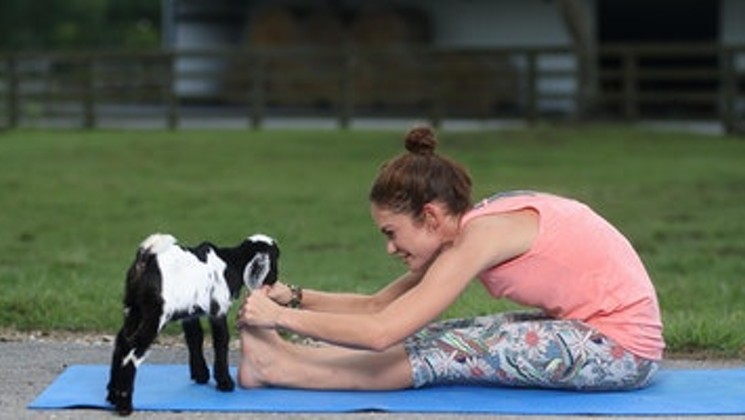
What does yoga look like when no one is looking?
The answer to the question depends on who we are watching. What yoga looks like can vary widely, especially because there are 4 main kinds of yoga: The yoga of intelligence (jnana), the yoga of devotion (bhakti), the yoga of service (karma), and hatha yoga which is the one we think of when we see people doing downward dog. Yoga for one person may look like studying scripture and attending dharma talks. While for someone else, it’s doing service to their community without expectation of getting anything in return.
For another individual, yoga is chanting and repeating the same kriya for an hour every single day. Someone doing an hour-long physical yoga class, breathing, resting at the end, and saying “OM” might be more of what we’ve come to recognize yoga as today. So whether sitting silently on a cushion for hours or doing plank while drinking a microbrew, we can technically call it yoga.
If you ask someone in the East, someone in the West, someone today, and someone from the past, their answers can vary as widely as the styles of yoga offered. So is any of the yoga we see taking it too far?





